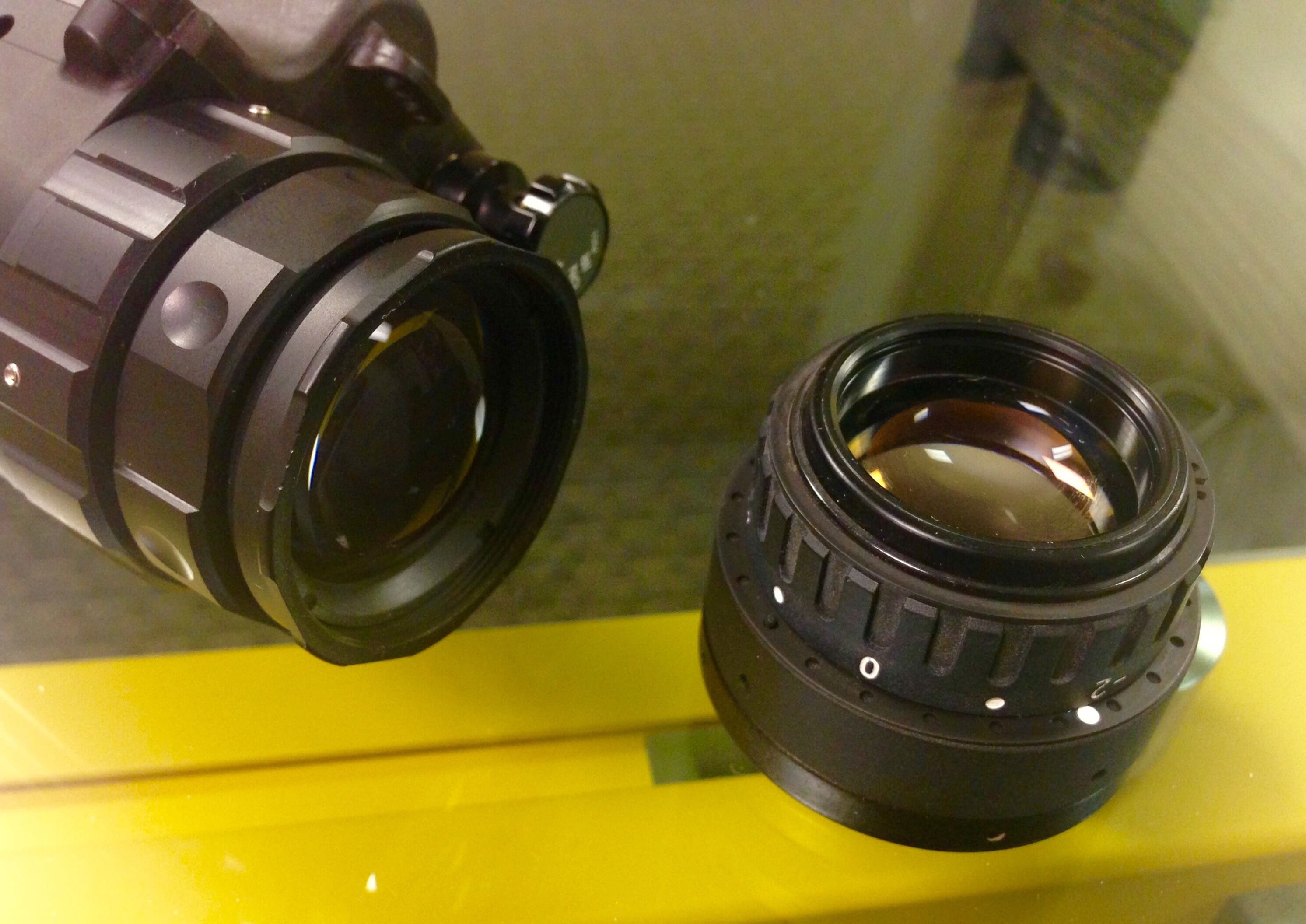Nearing the end of the of the series of upgrade vs. replace your NVD (specifically the PVS-14), a significant item(s) are to be addessed-the actual optics.
As with all monoculars, the PVS-14 has two specifically. The objective and eyepiece lens assemblies (“lens” for ease of discussion). Combined, these lenses weigh more than any other single component and drive the cost more than any item other than the image tube itself.
As mentioned previously and referenced in a user post last week, removing the eyepiece lens is relatively simple. The eyepiece easily spins off along with its stop ring. Combined weight of these components is a hefty 63g on average (the image tube average weight is about 75g).
Without going into excessive details, the legacy PVS-14 eyepiece is no simpleton part. Designed in the late 80s as a workhorse, the eyepiece can easily support the vision span of bifocal users along with those of us whom can’t see the ground we stand on without corrective measures. A whopping 10 or so diopters of adjustment (about a half inch of travel) is available in the design.
Today and in recent past most of us are corrected in some form to near 20/20 vision. Rare is the set of spectacles in the operational space. For reference, the last few USG goggle contracts in common domain have ZERO mechanical adjustments for users in the conventional form (spinning the lens in/out). These goggles use not only hybrid materials, but have fixed eyepieces corrected to about -.5D. The only adjustments are pop-in corrective lenses. These lenses also act as a protective element to the eyepieces themselves as they can be easily scratched. The huge advantage here is weight reduction of not only the lens materials, but the minimization of moving mechanical parts. These newer lenses often weight about 50% of the typical lens assemblies. Usually, cost is the driving factor with these type optics costs 2-8X as much as an off the shelf design. Again, a quantitative value of cost/quantity.
Going back to the objective lens briefly, with the upgrade of the chassis now the objective lens can be readily removed as well without having to strip the entire PVS-14 down completely. This allows a device to essentially now be reassembled once with no need to remove the critical electronics or image tube for basic modularity changes or maintenance.
In the image, a newer low weight Ether eyepiece was added to the upgraded chassis. This is a hybrid design which opens up the eye-box (the eye placement position sensitivity) along with a weight reduction down to about 46g (17g less comparative). This upgrade is novel for a few reasons; it balances the monocular as well as offsets any other potential weight increases noted in previous segments (i.e. titanium vs. plastic stop ring, etc.). These are particularly sensitive items when attempting to go into the goggle or “BNVD” viewing space for both weight and optical convergence. In most BNVD (meshing two monoculars into a goggle format), you will notice the eyepieces and objective lenses are PVS-14 optics. This can be sub-optimum. Trending is now to have a dual channel optic, but there is a reason most “goggles” cost much more than 2X the cost of a monocular (tube cost aside). The optics drive the cost and for good reason.
Night Vision Redux is a weekly series prepared with the assitance of DEP, the US subsidiary of Photonis. It is intended to educate readers about image intensification (I2) systems and ways they can be upgraded without having to purchase completely new systems.
Tags: DEP


